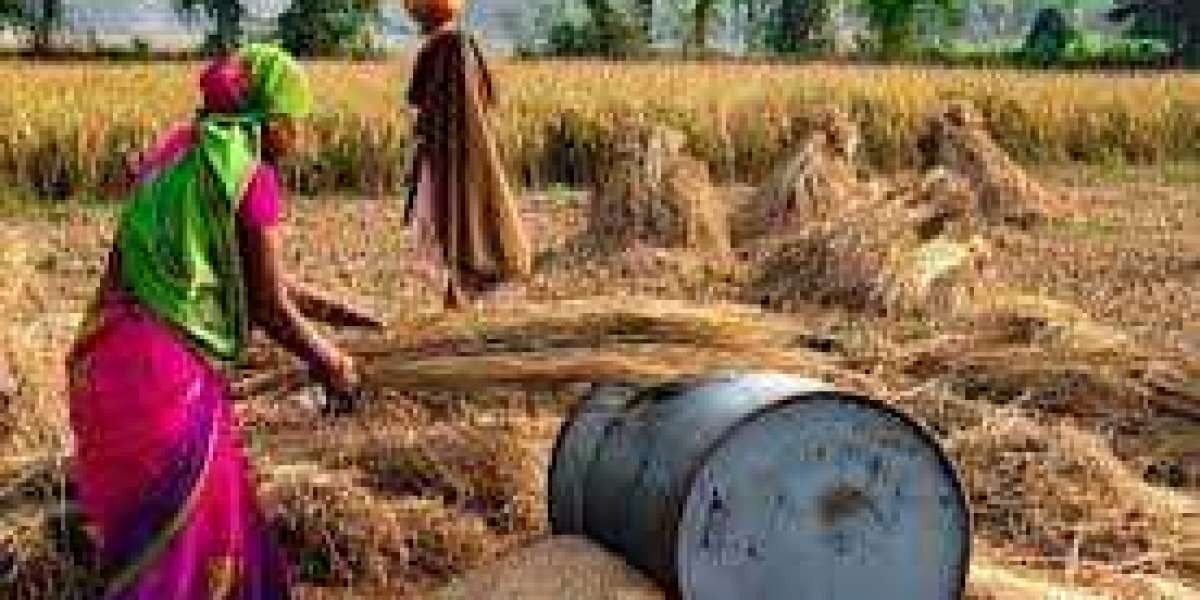Traditional farming, often referred to as subsistence or primitive farming, is the agricultural practice that has been carried out by humans for thousands of years. It relies heavily on indigenous knowledge, natural resources, and time-tested techniques passed down through generations. Traditional farming typically involves the use of simple tools, natural fertilizers, and organic farming methods, with minimal reliance on chemical inputs or modern machinery.
Key Characteristics of Traditional Farming:
- Manual Labor: Traditional farming relies primarily on human and animal labor for planting, cultivating, and harvesting crops.
- Use of Organic Inputs: Farmers use natural fertilizers like compost, manure, and green manure to enrich the soil.
- Crop Diversity: This farming method often involves mixed cropping and crop rotation to maintain soil fertility and reduce the risk of pest and disease outbreaks.
- Water Management: Traditional irrigation techniques, such as rain-fed systems, wells, and small-scale irrigation channels, are commonly used.
- Indigenous Practices: Traditional farming incorporates local knowledge and practices suited to the specific ecological conditions of an area.
Differences Between Traditional and Modern Farming
While traditional farming has sustained communities for centuries, modern farming has revolutionized agricultural practices over the last few decades. The primary differences between traditional and modern farming are outlined below:
- Technological Advancements:
- Traditional Farming: Relies on basic tools like hoes, sickles, and plows, often powered by human or animal labor.
- Modern Farming: Utilizes advanced machinery such as tractors, harvesters, and automated systems, significantly increasing efficiency and reducing labor costs.
- Crop Yields and Production:
- Traditional Farming: Generally produces lower yields due to limited use of fertilizers, pesticides, and improved seed varieties.
- Modern Farming: Achieves higher yields through the use of chemical fertilizers, pesticides, genetically modified crops, and precision farming techniques.
- Environmental Impact:
- Traditional Farming: Typically more sustainable and eco-friendly, maintaining soil health and biodiversity through natural farming practices.
- Modern Farming: Can lead to environmental degradation, including soil erosion, water pollution, and loss of biodiversity due to the heavy use of chemicals and monoculture practices.
- Scale of Operations:
- Traditional Farming: Usually practiced on small, family-owned plots with limited resources.
- Modern Farming: Conducted on a larger scale, often involving corporate-owned farms with significant capital investment and extensive infrastructure.
- Economic Viability:
- Traditional Farming: Often supports subsistence living, with surplus produce sold in local markets.
- Modern Farming: More commercially oriented, focusing on large-scale production for national and international markets.
Articles on Specific Farming Practices
- Banana Farming:
Banana farming is a significant agricultural activity in tropical and subtropical regions. It involves the cultivation of banana plants, which require a warm climate, well-drained soil, and regular watering. Key practices in banana farming include proper planting techniques, nutrient management, pest and disease control, and timely harvesting to ensure high-quality fruit.
- Tomato Farming:
Tomato farming is widely practiced due to the high demand for tomatoes in culinary uses worldwide. It involves selecting the right varieties, preparing the soil, planting seedlings, and providing adequate water and nutrients. Pest and disease management, along with proper pruning and staking, are crucial for maximizing yield and ensuring healthy plants.
- Dragon Fruit Farming:
Dragon fruit, also known as pitaya, is a tropical fruit that has gained popularity for its unique appearance and health benefits. Dragon fruit farming requires a warm climate, well-drained soil, and support structures for the climbing cactus plants. Key practices include selecting quality planting material, proper irrigation, nutrient management, and pest control.
- Uses of Neem Leaves:
Neem leaves are valued for their medicinal and agricultural uses. In traditional medicine, neem leaves are used to treat various ailments due to their anti-inflammatory, anti-bacterial, and anti-fungal properties. In agriculture, neem leaves and their extracts are used as natural pesticides and fertilizers, helping to protect crops from pests and diseases while enriching the soil.
Types of Farming in India
India, with its diverse climate and geography, practices a wide range of farming methods. Some of the prominent types of farming in India include:
- Subsistence Farming: Small-scale farming where farmers grow crops primarily for their consumption, with little surplus for sale.
- Commercial Farming: Large-scale farming aimed at producing crops and livestock for sale in the market, often involving modern techniques and machinery.
- Plantation Farming: Large-scale farming of cash crops such as tea, coffee, rubber, and sugarcane, usually involving significant capital investment.
- Mixed Farming: Combining crop cultivation and livestock rearing on the same farm to optimize resource use and diversify income sources.
- Organic Farming: Growing crops without synthetic chemicals, focusing on natural inputs and sustainable practices to maintain soil health and biodiversity.
- Horticulture: Intensive cultivation of fruits, vegetables, flowers, and ornamental plants, often involving greenhouse and polyhouse techniques.
- Aquaculture: Farming of fish, crustaceans, and other aquatic organisms in controlled environments, contributing to the country's seafood production.
- Sericulture: Rearing of silkworms for silk production, a traditional practice with economic significance in certain regions.
Conclusion
Traditional farming, with its reliance on indigenous knowledge and sustainable practices, continues to play a vital role in many communities. However, the advent of modern farming techniques has brought about significant changes in agricultural productivity and efficiency. Understanding the differences between traditional and modern farming is essential for developing sustainable agricultural policies that balance productivity with environmental conservation. By exploring various farming practices and their applications, such as banana, tomato, and dragon fruit farming, as well as the uses of neem leaves, we gain valuable insights into the diverse and dynamic nature of agriculture in India and beyond.








